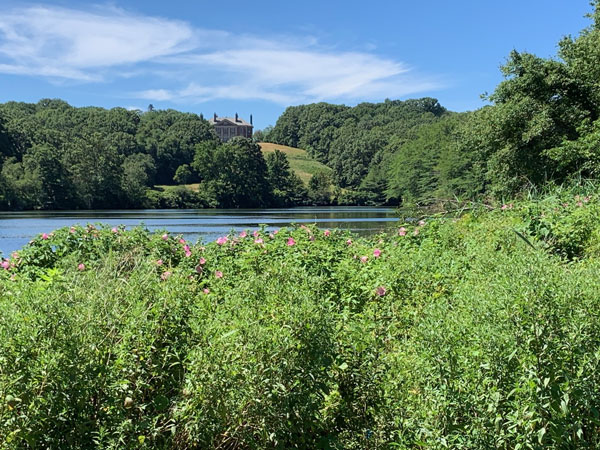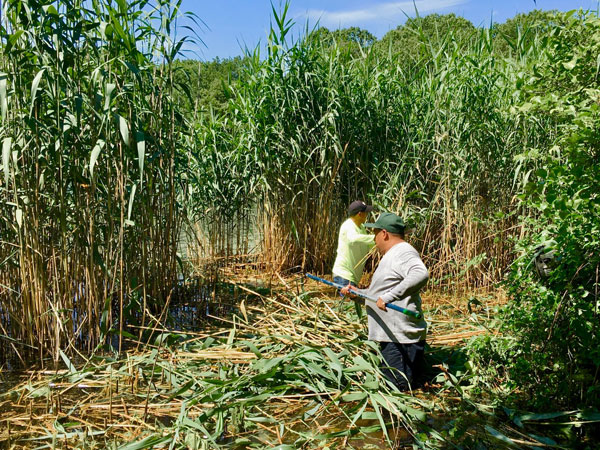Phragmites Management Project
 Phragmites australis, also known as common reed, is native to Europe and was not present at Caumsett when Marshall Field III owned the estate nearly 100 years ago. This aggressive plant poses a major risk to the survival of native species by forming dense monocultures that outcompete the native flora, thereby decreasing biodiversity.
Phragmites australis, also known as common reed, is native to Europe and was not present at Caumsett when Marshall Field III owned the estate nearly 100 years ago. This aggressive plant poses a major risk to the survival of native species by forming dense monocultures that outcompete the native flora, thereby decreasing biodiversity.
Fresh Pond, a 14-acre freshwater pond, is a unique ecological and scenic feature of the park. It is thought that Phragmites colonized Caumsett in the 1980s and by 2017 had infested about one-half acre of Fresh Pond.
In 2017, the Caumsett Foundation received a grant from the New York State Department of Environmental Conservation (NYSDEC) for the purpose of reducing Phragmites at Fresh Pond. A professional team was hired to consult and perform the removal of this grass from 2019 to 2021. Starting in the early summer of 2019 one-half acre of Phragmites was cut down to water level. Cutting took place in the summers of 2019, 2020 and 2021 weakening the plant rhizomes and thus the plant itself. The cut debris was moved off-site, following NYSDEC regulations.
Using more than one control strategy to remove Phragmites increases the likelihood for success. Therefore, in addition to cutting the living vegetation, chemical treatment using the herbicide Rodeo occurred in the Fall of 2019 and 2020. (Post-treatment monitoring determined that chemical application was not necessary in the Fall of 2021.)
 This glyphosate-based herbicide is absorbed through plant leaves and translocated to plant roots, where it disrupts an enzyme essential to protein production eventually resulting in the death of the plant root. The application method uses a short wand attached to a backpack container.
This glyphosate-based herbicide is absorbed through plant leaves and translocated to plant roots, where it disrupts an enzyme essential to protein production eventually resulting in the death of the plant root. The application method uses a short wand attached to a backpack container.
Removing the Phragmites has allowed the native seeds that had been stored in the soil to reestablish and for the existing native species to thrive.
Today annual maintenance by summer interns and volunteers continues by cutting the Phragmites at least 6 inches below the surface of the water. Any Phragmites found on land are cut back.
